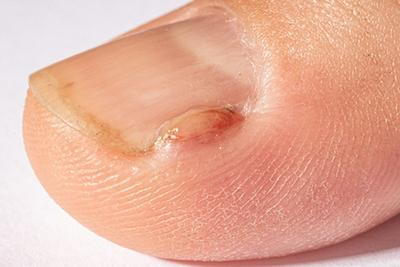
Dealing with Ingrown Toenails: Prevention and Treatment in Indianapolis & Carmel, IN
A common problem many people experience is an ingrown toenail, which happens when a toenail edge grows into the nearby skin, with the potential to create various painful symptoms. Dr. Jeffrey Agricola of Prestige Podiatry – with two locations in Indianapolis & Carmel, IN, explains that while an ingrown toenail usually impacts the big toe, it can occur on any toe of either foot. However, left untreated, an ingrown toenail can potentially lead to further complications.
Causes of Ingrown Toenails
Ingrown toenails - a.k.a. onychocryptosis, may happen due to a few reasons. In addition to having a genetic predisposition or simply having specific anatomical factors that elevate one’s likelihood of an ingrown toenail from developing, the following factors may also contribute to their development –
- Poor Nail Trimming Practices.
- Improper Footwear.
- An injury/trauma.
Ingrown Toenails Symptoms
These are the typical symptoms you may experience –
- Pain & discomfort.
- Visible Redness
- Swelling
- Tenderness in the impacted area.
When an ingrown toenail gets infected, its symptoms (i.e., swelling/pain/discharge) can intensify. In more serious/severe cases, the skin around the ingrown toenail may become hard/overgrown.
Ingrown Toenail Treatment Options
For more mild cases, soak your foot in Epsom salts and warm water and keep the area clean and dry.
If an ingrown toenail doesn’t heal or requires treatment that has gone unaddressed, the condition may progress to a more severe medical issue, such as a skin infection or an abscess. When managing/treating an infection caused by an ingrown toenail, Dr. Agricola might recommend a round of oral antibiotics or prescribe a topical antibiotic.
In certain instances, surgery may be necessary. Minor surgery options are available to provide the desired relief.
Preventing Ingrown Toenails
Smart Footwear Choices — Selecting shoes with inadequate room in the toe box can cause pressure that may lead to the development of an ingrown toenail.
Improving Foot Hygiene/Toe Nail Trimming Habits — Maintaining good foot hygiene (i.e., keeping feet dry/clean) is crucial for minimizing the infection risk. Trimming toenails carefully is essential, so cut straight across the top of the nail without being trimmed too short. Hint - a nail file can round the corners of the nails to help avoid developing an ingrown toenail.
Avoiding Toe or Toenail Trauma — Stubbing a toe or any other type of toenail injury can cause an ingrown toenail to develop.
Learn More about Ingrown Toenails from a Podiatrist Near You
If you experience discomfort/pain or swelling, or if the ingrown toenail doesn't start to heal with the above-noted conservative home treatment options, contact Dr. Agricola or a staff member of Prestige Podiatry at (317) 881-0070 or at (317) 846-4111, serving Indianapolis & Carmel, IN

